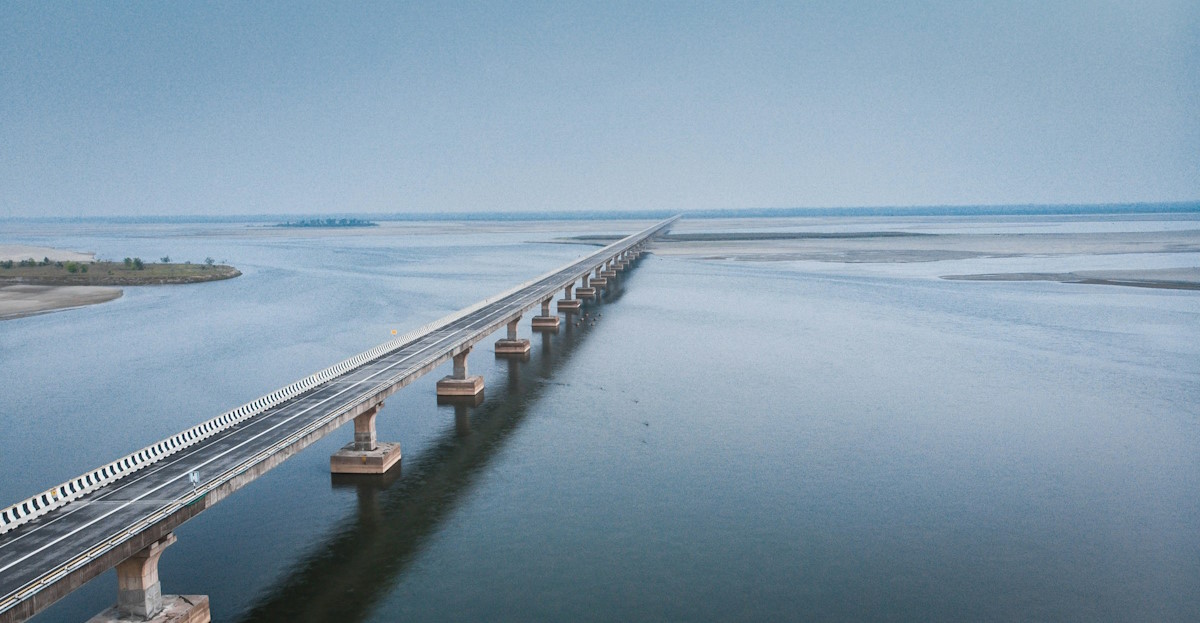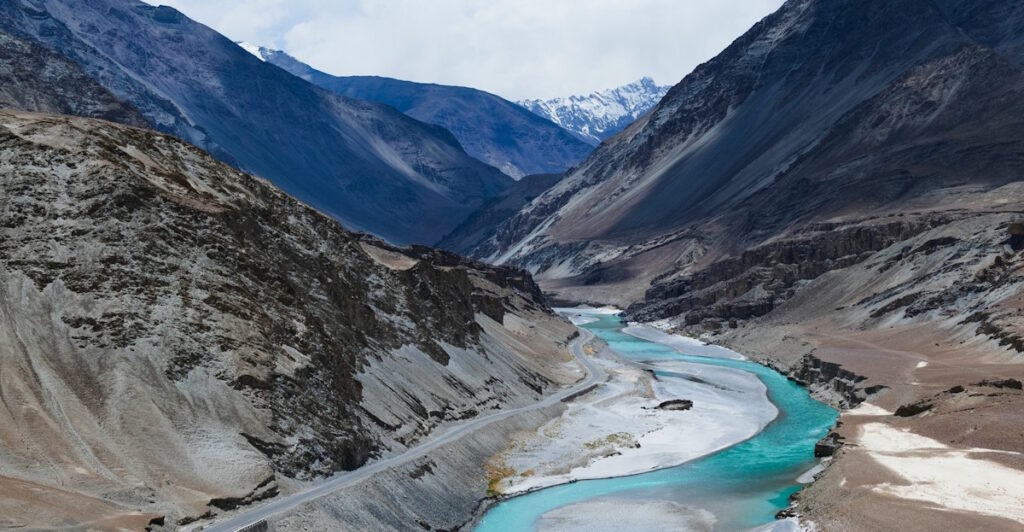by Abdul Haq
Concerns regarding the legality of the project under international law and its possible effects on downstream nations – particularly Bangladesh and India – have been raised by China’s recent commencement of the largest hydropower dam in the world on the Yarlung Zangbo also known as Brahmaputra River in Tibet.
The construction of the largest hydropower dam in the world in Tibet by China represents both its sovereign right to utilise natural resources and a difficult legal challenge that calls for open collaboration with Bangladesh and India, its downstream neighbours, in order to strike a balance between fair water sharing, regional stability, and environmental preservation.
Using five connected power plants along a steep river section called the ‘Great Bend’, this enormous dam — dubbed a ‘project of the century’ by Chinese Premier Li Qiang — is set to produce electricity on a scale that will surpass that of the Three Gorges Dam. The Chinese government portrays this project as a calculated move to increase renewable energy, lower carbon emissions, and encourage ecological preservation; official statements substantiate this claim that there will be little environmental damage and no negative consequences for downstream water supplies.
From the perspective of international law governing transboundary rivers, the key principles at stake are ‘equitable and reasonable utilization’ and the obligation to prevent significant harm to other riparian states. The 1997 UN Convention on the Law of the Non-Navigational Uses of International Watercourses, although not ratified universally, reflects customary international law emphasizing cooperation, notification, and consultation among states sharing watercourses. China, as the upstream riparian on the Brahmaputra, has the sovereign right to utilize the waters within its territory; however, this right is bounded by the duty not to cause significant transboundary harm and to notify and consult downstream nations.
The main downstream nations that rely on the Brahmaputra-Jamuna River system, Bangladesh and India, have voiced grave concerns about the dam’s possible impacts on livelihoods, ecosystem stability, and water flow. Bangladesh’s enormous floodplains and the north-eastern states of India heavily depend on the river’s seasonal flows for drinking water, fishing, and agriculture. Due to the dam’s location on a geological fault zone that is seismically active and susceptible to landslides, experts warn that catastrophic events could occur that would impact millions of people downstream. The geological and environmental hazards of building a mega-dam in such complicated terrain, as well as the possibility of downstream disruptions from disasters, were emphasised by Y. Nithiyanandam from the Takshashila Institution.
Nevertheless, the recent earthquake in Tibet, which killed more than 100 people, highlights the region’s susceptibility to natural disasters and heightens downstream nations’ concerns regarding dam safety. Indian officials have urged openness and thorough environmental impact analyses, highlighting the necessity of China communicating with its neighbours downstream to address their common concerns about water security. However, China’s official stance insists that the project has passed stringent scientific reviews and won’t have any detrimental effects on the rights and interests of downstream countries.
Complexity is increased by the geopolitical component and strategic mistrust is heightened by the dam’s proximity to the disputed Line of Actual Control (LAC), which separates China and India. China claims the downstream Indian state of Arunachal Pradesh as ‘South Tibet’. The area’s water infrastructure developments are more sensitive due to this unresolved territorial dispute. A growing regional struggle for control of the Brahmaputra’s water resources is indicated by India’s own hydroelectric plants in Arunachal Pradesh, which are perceived as countermeasures.
In addition to geopolitical and environmental issues, the project represents internal Tibetan dynamics, as evidenced by reports from groups like the International Campaign for Tibet that link hydropower developments to human rights abuses. There have been reports of ecological degradation, the loss of cultural heritage sites, and the uprooting of Tibetan communities as a result of large-scale dam construction. China’s hydropower strategy in Tibet is not just about energy; it represents a form of resource control that complicates regional diplomacy and risks exacerbating mistrust with neighbours who rely on these shared waters. Dialogue mechanisms must be strengthened, ensuring inclusive governance that respects the rights of local Tibetan populations and downstream states alike.
Is China legally entitled to construct the dam? From a strict sovereignty standpoint, yes — China controls the upper reaches of the Yarlung Zangbo, and international law recognizes sovereign rights over natural resources within borders. However, international commitments under customary watercourse law to prevent serious harm, to inform and consult states that may be impacted, and to cooperate in good faith limit such rights. There are still concerns regarding procedural compliance with international best practices because Bangladesh and India have not made their thorough environmental impact studies and prior consultation reports publicly available. The project’s opacity feeds downstream nations’ misgivings and erodes the trust necessary for transboundary water cooperation.
China’s hydroelectric dam could have a variety of real-world effects on Bangladesh and India. Firstly, major concern is the alteration of water flow and ecology, as dams naturally change the patterns of river flow, which can reduce the amount of water available downstream during reservoir filling phases and interfere with the natural sediment transport necessary to sustain agricultural fertility. Fisheries and aquatic ecosystems, which are essential to the livelihoods of many local communities, may also be harmed by such changes. Secondly, significant disaster risks are also increased by the Tibetan Plateau’s geological fragility; dam failure or poor management, particularly during floods or seismic activity, could have disastrous transboundary effects that would affect millions of people downstream. Lastly, but not the least, this infrastructure has the potential to intensify regional tensions, complicating diplomatic relations and jeopardising wider regional security because it is located close to disputed or sensitive border areas. As a result, the dam has important geopolitical ramifications in addition to environmental and hydrological effects.
It is obvious that a collaborative framework is required. In order to exchange hydrological data, carry out cooperative impact assessments, and manage water resources fairly, experts and officials support the creation of a transboundary river commission that would include China, India, and Bangladesh. Water diplomacy must go beyond zero-sum politics. To prevent disputes and advance sustainable development for all riparian parties, trust must be established via openness and scientific cooperation.
In conclusion, while China is legally permitted to build any type of dam on its territory, including the largest hydropower project in the world in Tibet, this sovereign right carries significant obligations under international law. China must make sure that downstream nations, especially Bangladesh and India, which rely heavily on the waters of the Brahmaputra, are not seriously harmed by its development. Transparent, collaborative, and inclusive water governance is critically needed given the region’s environmental sensitivity, the livelihoods of millions downstream, and the intricate geopolitical backdrop. It can be foreseen that the dam runs a potential risk of becoming a source of regional conflict rather than a driving force for long-term development and regional stability in the absence of constructive dialogue and cooperation of China with the downstream nations.



















